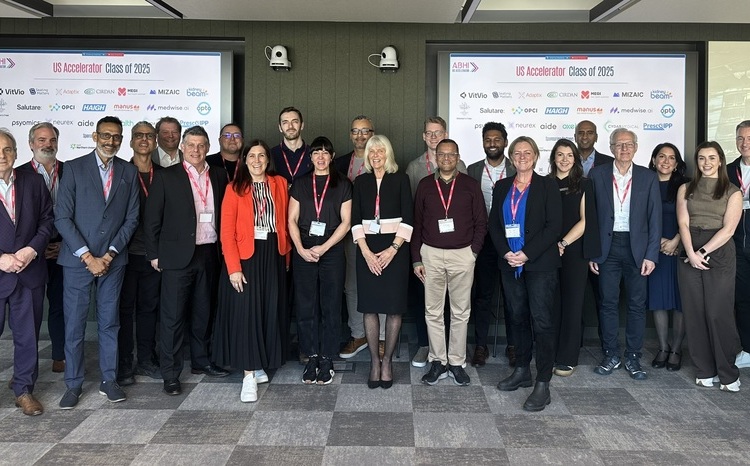EHI CCIO interview: Jenny O’Brien
- 16 May 2012

In 1993, Jenny O’Brien had her first encounter with a computer. It was an Apple Mac owned by a consultant working in the intensive care unit at St Vincent’s Hospital in Melbourne, Australia.
It took O’Brien two days to teach herself to use the computer. Then, in the same year, the junior nurse put her hand up to help Hewlett Packard implement bedside computing at the hospital.
It was a spur of the moment decision that put her on the path to becoming one of Australia’s first chief clinical information officers.
“I offered to get involved in the project and, probably because I was the only one that was silly enough to put my hand up at the time, I ended up becoming the clinical manager.
“It was like, ‘oh that looks interesting, do you need a hand?’ – it was as simple as that,” O’Brien tells eHealth Insider.
Minding the gap
Because the implementation was the first that HP had attempted outside of America and Europe, O’Brien was sent on an intensive training course. She returned down under as one of the most experienced clinicians in bedside computing.
Ten years later, O’Brien finally turned to the ‘dark-side’ and became St Vincent’s chief information officer. But it was another two years before she discovered the role that meant she could have the best of both worlds.
While studying the effectiveness, safety and efficiency of bedside computing for the Winston Churchill Fellowship in America, O’Brien came across the chief medical information officer role.
“It was like a light-bulb went off. I was like ‘this is the role I have been looking for, and now I know what it’s called’,” O’Brien says.
But it wasn’t until 2010 that O’Brien actually stepped into the clinical equivalent of the role. Epworth Healthcare – the largest private healthcare provider in Victoria – was embarking on a project to create a ‘digital hospital’ and wanted O’Brien’s help.
It was then up to her to sell the idea of appointing a CCIO to the organisation, and luckily it went for it. Now O’Brien says her job is to act as a ‘translator’ and ‘facilitator’ between the clinical and IT staff.
“What I do is really is get clinician’s talking about ‘gee it would be great if we could do this’, and help them take that to ‘gee we actually are doing it’.”
Like most other healthcare IT project managers, O’Brien says the biggest hurdle to success is change management – and that’s where having a combination of IT and clinical expertise is imperative.
“To understand what changes have to be made, facilitated and fostered, and how you can encourage, cajole people, you have to understand where people are coming from – without that it’s a very difficult ask.
“There are sorts of things that you couldn’t ask a pure IT manager or business manager to do – it would be like me stepping in and telling an accountancy team about their role.”
Instead, having walked a mile in a clinician’s shoes gives O’Brien the credibility needed to earn the respect of the staff whose support she needs to get new systems up and running. Without the combination of both IT and clinical know-how, O’Brien says projects are much less likely to succeed.
“It’s what makes it [a project] happen… you can do everything else right, but unless you have got someone who represents the clinical community, but can also understand the business imperatives and IT, then you are never going to get quite the outcome that you may have first anticipated.”
Support for the EHI CCIO Campaign
O’Brien knows of only one other CCIO in the whole of Australia which, she says, suggests that Epworth has made a brave and ground-breaking step in appointing her to a role that has yet to be proven successful.
The argument for CCIOs clearly exists, but O’Brien says the key is for organisations to start with a role which is in line with the institution’s level of maturity. For example, Epworth appointed a CCIO as the first step, but O’Brien hopes in future it will appoint someone in a similar role but with more of a medical background – a CMIO.
Even just having a clinician who understands a bit about IT can be “the glue that binds it together and translates across the divide,” O’Brien says.
She would also like to see government support for such clinical informatics roles, and perhaps formal education and accreditation.
The first thing, however, is to get those already doing the work to share their experiences – sending clinicians on secondments to the United States, where the role is prevalent, or having those people visit and talk about their experiences. “Then they can really understand what they do and what value that it adds.”
In the meantime, O’Brien will keep “banging the drum” for CCIOs. In terms of the UK, O’Brien says that however people view the demise of the National Programme for IT in the NHS, one good thing to come out of the mess is a realisation that CCIO roles need to be created.
“The UK initiative is inspiring and needs to be applauded… I just wish they would catch on as quickly here in Australia!”




